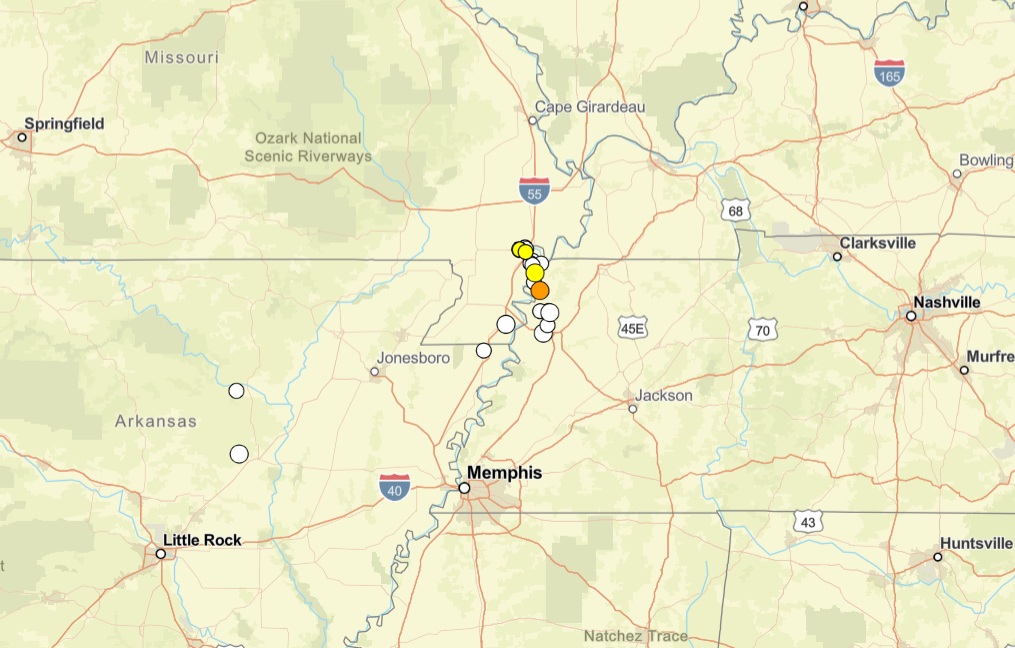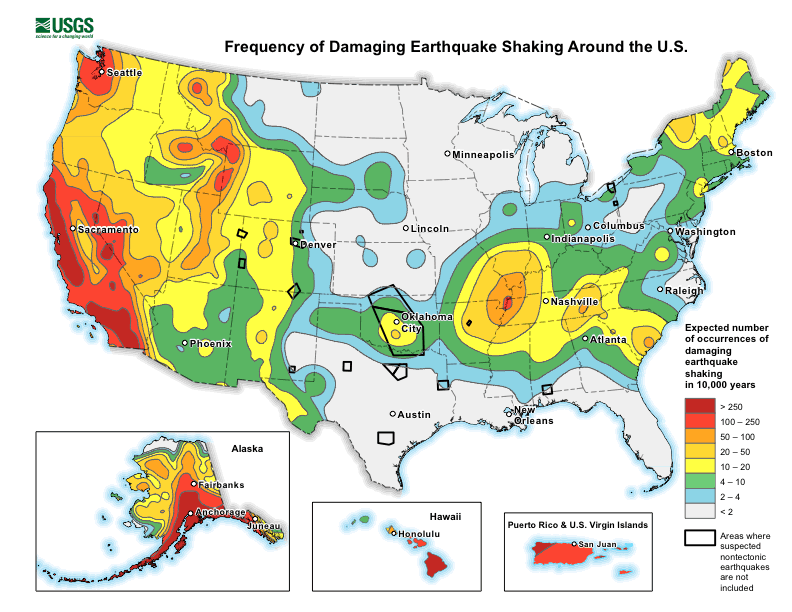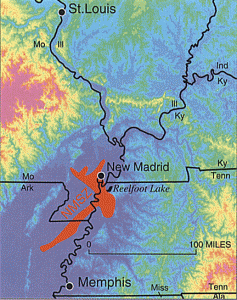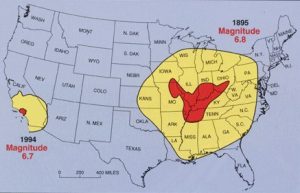Strongest Quake of the Week Strikes Tennessee near New Madrid Seismic Zone

USGS reports that the strongest earthquake of the last 7 days struck Tennessee near the heart of the New Madrid Seismic Zone today at 7:26 am. The relatively weak magnitude 2.2 event, which struck from a depth of 8.3 km, serves as a reminder of how active the region is for quakes. Today’s earthquake was the 23rd to strike the region over the last 30 days and was the 5th to strike over the last week. The epicenter of today’s earthquake was in Ridgely which has been home to most of the recent earthquakes in the New Madid Seismic Zone recently.
According to USGS, earthquakes with a magnitude of 2.0 or less are rarely felt or heard by people, but once they exceed 2.0 , more and more people can feel them. While damage is possible with magnitude 3.0 events or greater, significant damage and casualties usually don’t occur until the magnitude of a seismic event rises to a 5.5 or greater rated event.

While last night’s earthquake was relatively inconsequential with no damage reports, authorities are concerned that people aren’t properly prepared for when a big earthquake will strike this region. The matter of a larger destructive earthquake in this area is more of a matter of “when” rather than “if.” The NMSZ has a violent history that experts say will repeat itself, although no one is sure when it’ll happen.

December 16 marks the anniversary of the first of three major quakes to strike the United States during the winter of 1811-1812, a violent time in seismological history of the region that scientists say will be repeated again.
While the US West Coast is well known for its seismic faults and potent quakes, many aren’t aware that one of the largest quakes to strike the country actually occurred near the Mississippi River. On December 16, 1811, at roughly 2:15am, a powerful 8.1 quake rocked northeast Arkansas in what is now known as the New Madrid Seismic Zone. The earthquake was felt over much of the eastern United States, shaking people out of bed in places like New York City, Washington, DC, and Charleston, SC. The ground shook for an unbelievably long 1-3 minutes in areas hit hard by the quake, such as Nashville, TN and Louisville, KY. Ground movements were so violent near the epicenter that liquefaction of the ground was observed, with dirt and water thrown into the air by tens of feet. President James Madison and his wife Dolly felt the quake in the White House while church bells rang in Boston due to the shaking there.
But the quakes didn’t end there. From December 16, 1811 through to March of 1812, there were over 2,000 earthquakes reported in the central Midwest with 6,000-10,000 earthquakes located in the “Bootheel” of Missouri where the New Madid Seismic Zone is centered.
The second principal shock, a magnitude 7.8, occurred in Missouri weeks later on January 23, 1812, and the third, a 8.8, struck on February 7, 1812, along the Reelfoot fault in Missouri and Tennessee.

Read More
